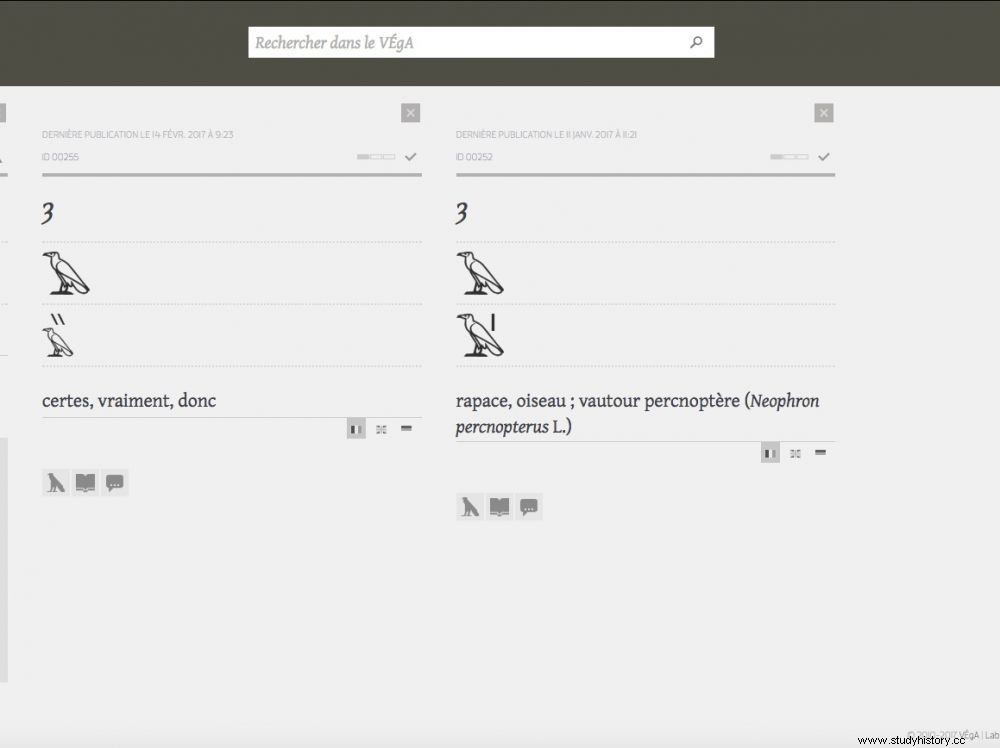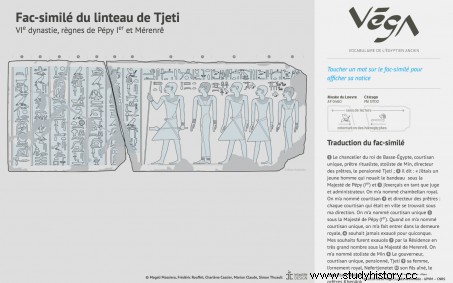Inaugurated a few days ago, the VÉgA online platform offers a unique lexical resource for archaeologists and lovers of ancient Egypt.

The Véga dictionary, translator of hieroglyphs.
DICOS . The study of hieroglyphs, this figurative writing used by the ancient Egyptians, requires patience... and space:"To decipher them, you have to use a dozen usual dictionaries and none of them adds up knowledge stored to date ", explains Anaïs Martin, doctor in Egyptology and scientific collaborator of the VÉgA program (for Vocabulary of Ancient Egyptian). This platform, which went online in May 2017, aims to become a reference collaborative lexicographic resource for the community of In this dictionary will be listed in terms all the "words" of the ancient Egyptian vocabulary with for each occurrence the number of attestations (number of times the word appears in literature), the different ways of drawing it as well as many other information for researchers. VÉgA is able to translate hieroglyphs into French, English, German and Arabic, in both directions. For the moment about 4000 lexicographic files are available but VÉgA will eventually contain nearly 16,000 hieroglyphs. base can be supplemented by specialists in the discipline who can enrich the dictionary with their knowledge.

Facsimile of the lintel of Tjeti (governor) which was exhibited at the Lattara Museum (Lattes, 34). Each hieroglyph is clickable and displays its meaning and other information. © Vega/Arcanae/Intactile Design.
VÉgA was produced as part of the LabEx ArcHiMedE (CNRS/Montpellier 3 University) in partnership with Intactile DESIGN, a company specializing in digital interfaces. The project has been supported since 2017 by a start-up, Arcanae, which handles the commercial management of the dictionary. It also aims to extend the concept to other ancient languages. And to develop new applications for museums such as this interactive facsimile of the Tjeti lintel (image above).
